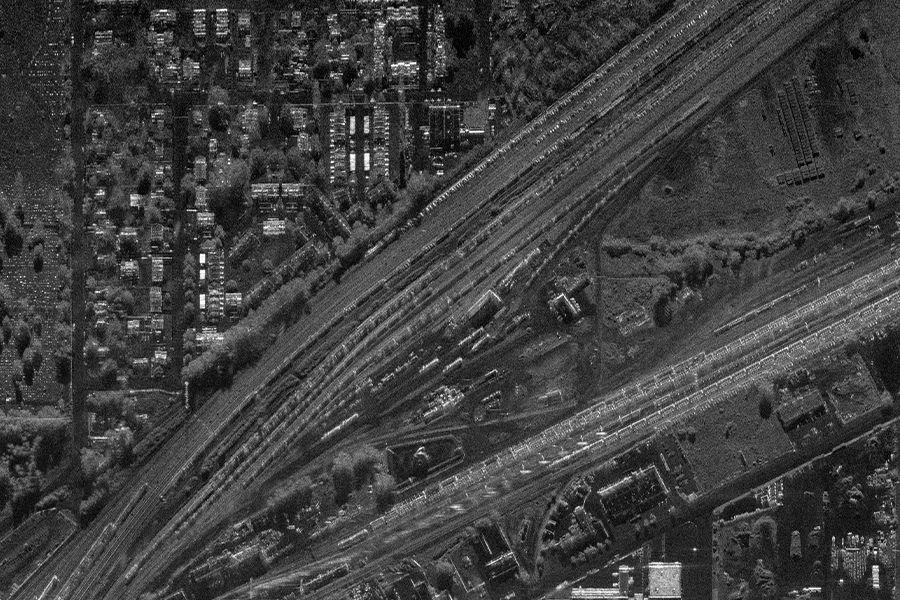SEE HIDDEN THINGS
Synthetic Aperture Radar, or SAR, is an imaging technology that transmits and receives signals in the electromagnetic spectrum in order to collect data pertaining to targets and the area in which they are located.
‘Aperture’ refers to the apparatus, or antenna, that receives the electromagnetic signal. The larger the aperture, the better the resolution. The aperture required for decent radar imagery tends to be too big to be physically practical, so SAR systems use movement to ‘synthesize’ an aperture much larger than the ‘real aperture’ or physical size of the antenna. This allows SAR systems to be quite small while still providing high-resolution imagery.
To understand Synthetic Aperture Radar (SAR), it is helpful to compare it to optical sensors like photo or video cameras. Both SAR and optical sensors use reflected electromagnetic waves to form imagery, but SAR and optical use different parts of the electromagnetic spectrum. Optical sensors use the visible light spectrum and the imagery closely resembles what we would see with our eyes. SAR sensors take advantage of longer-wavelength signals to form imagery that vaguely resembles black-and-white photography.
While optical sensors provide imagery that approximate human vision, the differences in illumination, wavelength, and resolution allow SAR to provide information and situational awareness that optical sensors simply cannot. SAR provides its own illumination making it able to capture imagery day or night and during times when environmental illumination sources might otherwise be obscured or degraded. Due to SAR transmitting and receiving wavelengths tens of thousands of times longer than optical sensors, SAR can penetrate dust, fog, smoke, and other atmospheric obstructions in order to ‘see’ targets below. SAR’s image detail is also independent of distance. The altitude of an airborne SAR system can be increased while maintaining the same image detail within the same area of view.
Think of it on a pixel level. In optical imagery the pixel represents light that hit the sensor and reflected off of an object in the field of view. Nothing is known about the light wave from the time it left the sensor to when it was reflected back. Radar is a different story. We know precisely where the radar is in space and time, exactly when the electromagnetic wave left the antenna, the exact nature of the wave when it left, how fast the wave is moving, how far it travelled (down to a micrometer), and even what has happened to the wave since leaving the transmit antenna, whether it has undergone a Doppler or phase shift.
Imagine having all of this data built in to every single pixel and applying algorithms and processes to it. Not only does your situational awareness increase but your capabilities increase as well.
SAR IMAGE SAMPLES
TYPICAL USES FOR SAR
IMSAR imaging serves as the foundation for other capabilities, such as Coherent Change Detection (CCD), Moving Target Indication (MTI), and more. When used to perform these more advanced capabilities, IMSAR systems can perform multiple applications in a variety of industries. Typical uses for IMSAR’s ISR solutions can include:
- Intelligence Gathering
- Military Surveillance
- Reconnaissance Missions
- Disaster Preparation & Response
- Counter Drug Trafficking
- Search & Rescue Operations
- Wildland Fire Monitoring
- Pipeline Monitoring
- Livestock & Wildlife Monitoring
- Counter Illegal Fishing
- Monitoring Construction Sites
- Monitoring Mining Operations
- Infrastructure Monitoring
- Border Security
- Wildland Fire Studies
For more information about SAR and other products, contact us at information@imsar.com or call IMSAR sales at 801.798.8440.

